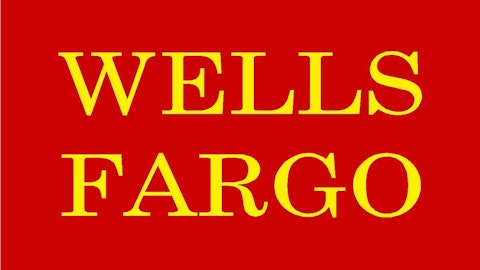While billionaire David Abrams may be somewhat reclusive, he is nonetheless well known in the investing world due to his stock picking skills and the performance of his hedge fund, Abrams Capital Management. Founded in 1999, Abrams Capital Management has delivered an average annual return of 15% in the first 14 years of its existence. However, the fund doesn’t seem to have performed as well in 2015. Research done by Insider Monkey shows that the stock performance of the fund’s long positions in companies with market caps of over $1 billion delivered a weighted average return of only 2.3% in 2015, though this did outperform the market. The estimated stock returns for Abrams Capital Management’s long equity portfolio using our metric might not look all that great at first glance, but they are definitely superior when compared to the estimated returns of Mr. Abrams’ mentor Seth Klarman of Baupost Group, which we calculating as being down by 27.7% using the same methodology. Since we don’t include the positions that a fund held in bonds, options or its short positions in our analysis, as well as it’s positions in smaller companies, it is quite possible that the returns estimated by us differ slightly or even greatly from the actual returns of the fund. However, they do give a fairly good idea of how a fund’s long stock picks performed over a given period of time.
Abrams Capital Management recently filed its 13F with the SEC for the reporting period of December 31. According to the filing, the fund’s U.S equity portfolio was worth nearly $1.83 billion at the end of December, 31% more than the $1.40 billion that it was worth at the end of September. In this article, we will be analyzing the fund’s top five equity holdings, which in aggregate amassed over 60% of the value of the fund’s equity portfolio at the end of December.
Follow Warren Buffett's Berkshire Hathaway
We track hedge funds and prominent investors because our research has shown that historically their stock picks delivered superior risk-adjusted returns. This is especially true in the small-cap space. The 50 most popular large-cap stocks among hedge funds had a monthly alpha of about 6 basis points per month between 1999 and 2012; however the 15 most popular small-cap stocks delivered a monthly alpha of 80 basis points during the same period. This means investors would have generated 10 percentage points of alpha per year simply by imitating hedge funds’ top 15 small-cap ideas (see the details here).
#5 Cleco Corporation (NYSE:CNL)
– Shares Owned by Abrams Capital Management (as of December 31): 2.36 million
– Value of Holding (as of December 31): $123.34 million
After initiating its stake in Cleco Corporation (NYSE:CNL) during the third quarter of 2015, Abrams Capital Management nearly doubled it during the fourth quarter. Shares of Cleco Corporation (NYSE:CNL) fell heavily in the middle of the fourth quarter after the company reported its third quarter financial results, but they have recouped all of those losses since then. In October 2014, the company announced that it had entered into a definitive agreement to be acquired by a group of American infrastructure investors for $55.37 per share. That deal is expected to be completed by the end of this quarter, which explains why Cleco Corporation (NYSE:CNL)’s stock is trading very close to that price and up by 2.8% for the year when the broader market has experienced a massive slump. The Mario Gabelli-led GAMCO Investors increased its holding in the company by 1,787 shares to 467,337 shares during the fourth quarter.
#4 Wells Fargo & Co (NYSE:WFC)
– Shares Owned by Abrams Capital Management (as of December 31): 2.77 million
– Value of Holding (as of December 31): $150.57 million
Despite Abrams Capital Management not making any changes to its stake in Wells Fargo & Co (NYSE:WFC) during the fourth quarter, the company dropped a spot quarter-over-quarter in terms of its ranking in the fund’s equity portfolio. Shares of Wells Fargo & Co (NYSE:WFC) have fallen by nearly 12% this year, but analysts think that this decline has made the stock even more attractive. According to them, the low forward price-to-earnings multiple of 10.24 that the stock currently trades at, coupled with an improvement in the bank’s net interest margin due to a rise in interest rates will help propel the stock higher. In addition, analysts also feel that the $0.38 per share quarterly dividend that Wells Fargo pays, which translates into an annual dividend yield of over 3%, provides a good safety net to investors buying at current levels. The stock currently sports an average rating of ‘Overweight’ from 36 analysts who cover it and an average price target of $56.89, suggesting upside of about 15%. Billionaire Ken Fisher‘s Fisher Asset Management made an incremental increase to its stake in Wells Fargo & Co during the October-to-December period, to nearly 19 million shares.
Follow Wells Fargo & Company (NYSE:WFC)
Follow Wells Fargo & Company (NYSE:WFC)
Receive real-time insider trading and news alerts





